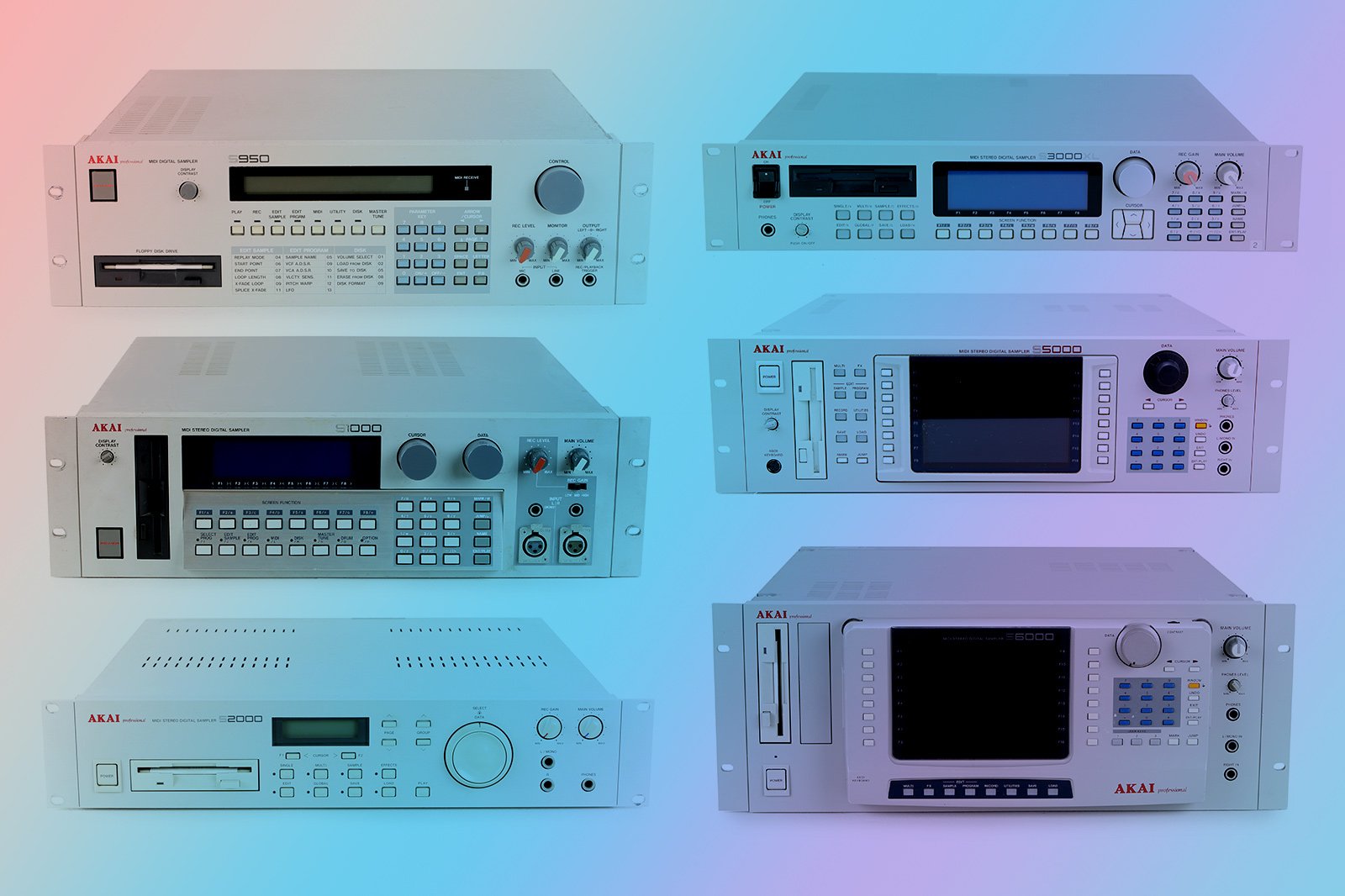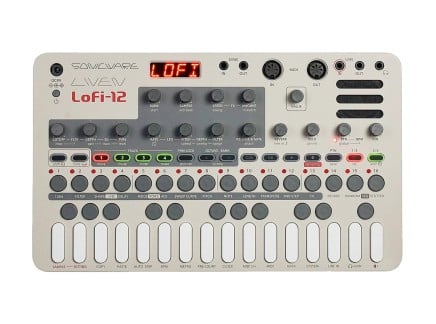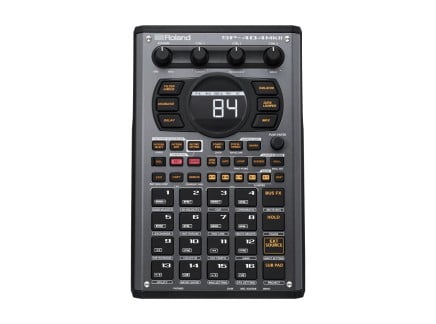Akai is a name that is synonymous with sampling. In particular, they are perhaps best-known for the legendary MPC series. Stretching from the original MPC 60 that was designed by Roger Linn and released in 1988, the legacy extends into the modern day, with recent offerings including the incredibly powerful MPC X and the Ableton-style clip-launching Force.
However, by the time the first MPC was released, Akai had already developed and brought out the first of its S series of rack mount samplers, which over the years have achieved near cult-like status in their own right. When used in conjunction with a sequencer such as an MPC, or computers of the era such as a Commodore 64, Atari ST, or later, the Amiga 600, the now infamously off-white boxes opened the door for a whole new way of producing music at a relatively affordable price when compared to the available alternatives—and led to the development of entirely new musical genres.
The S series includes a rich and varied selection of different devices, each with their own dedicated fan base. Below, we’ll embark upon a whistle-stop tour of some of the most note-worthy, including some details on their key features. Inevitably, we are bound to miss out some of your favorites, so treat this as a jumping off point to do your own research into this colorful world.
S612: The Beginning
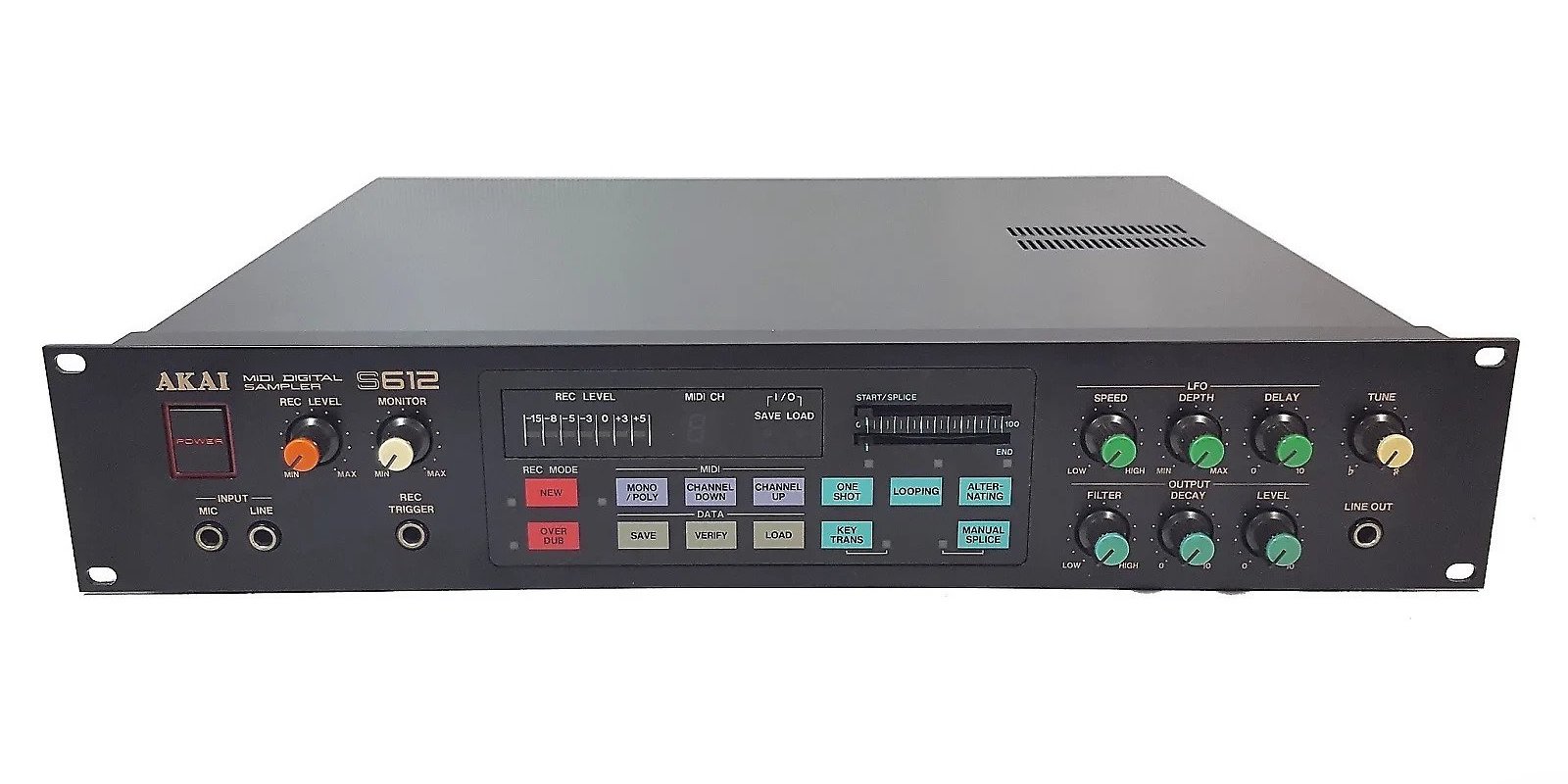
The S612 was the first of its lineage. Released in 1985, it boasted a 12-bit sample rate and six-note polyphony. Sampling time was limited to a maximum of eight seconds, and was dependent on the quality of the recording. While the spec wasn’t necessarily revolutionary even back then, the S612 helped pave the way for what was to come, and if you look around, you will still find those who swear by it. Interestingly enough, it is the only unit in the series that doesn’t sport the now instantly recognizable Akai colour scheme, coming in a rather demure shade of black.
S900: Extended Polyphony + Sampling Time
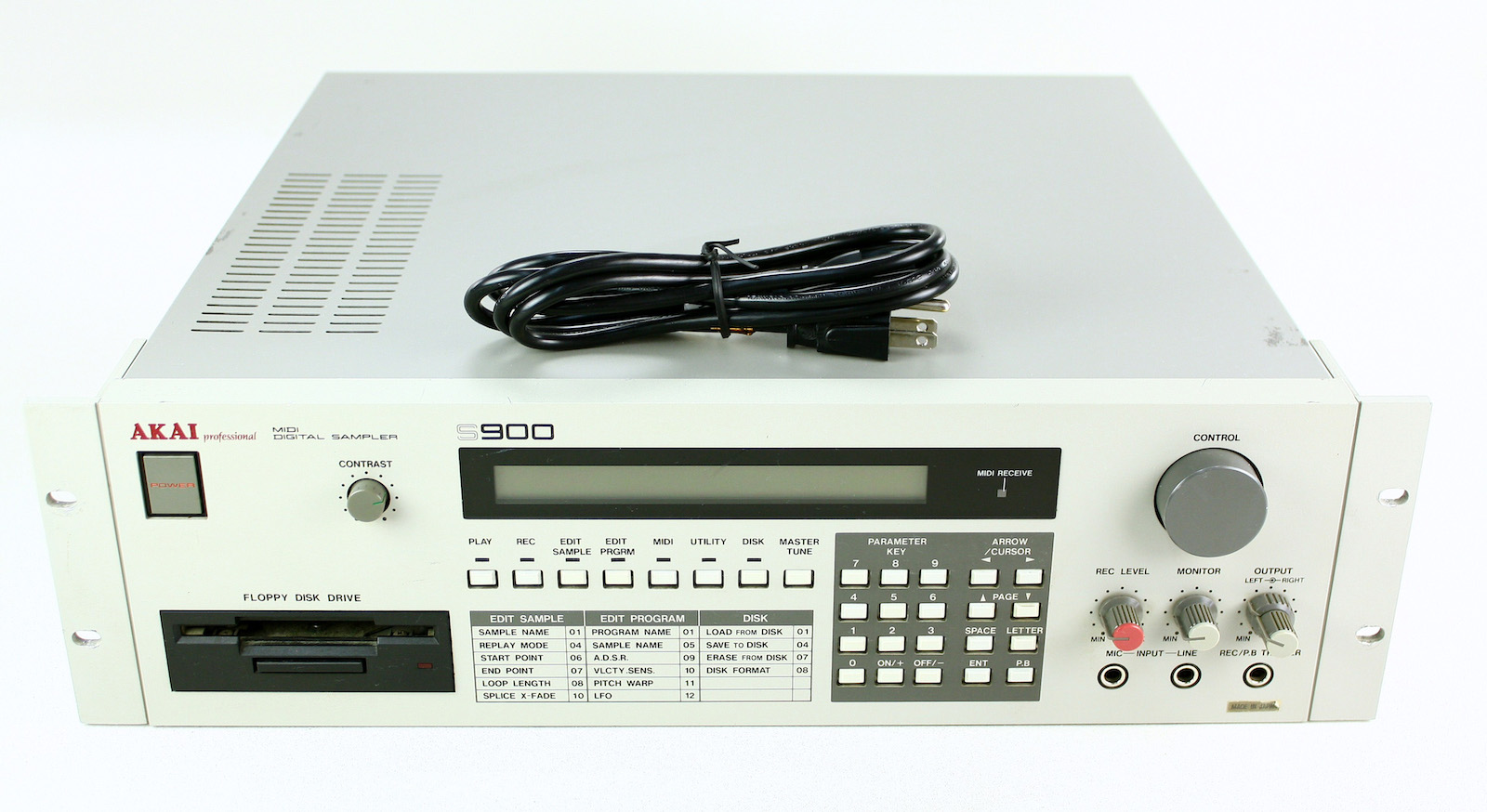
Landing in 1986, the S900 was another 12-bit sampler that had an extended polyphony from the S612 of eight notes. Thirty-two samples could be stored, and the sample rate was variable from 40kHz, down to 7.5kHz. There was a maximum sampling time from just under 12 seconds, all the way up to a rather impressive 63 seconds at the lowest quality—that’s quite the jump from the eight seconds of the S612!
In addition, there were some interesting hardware changes, with eight mono output jacks on the rear included by default, and also an optional eight-input trigger board. This was considered to be Akai’s first "professional" sampler.
S950: Increased Quality + Storage
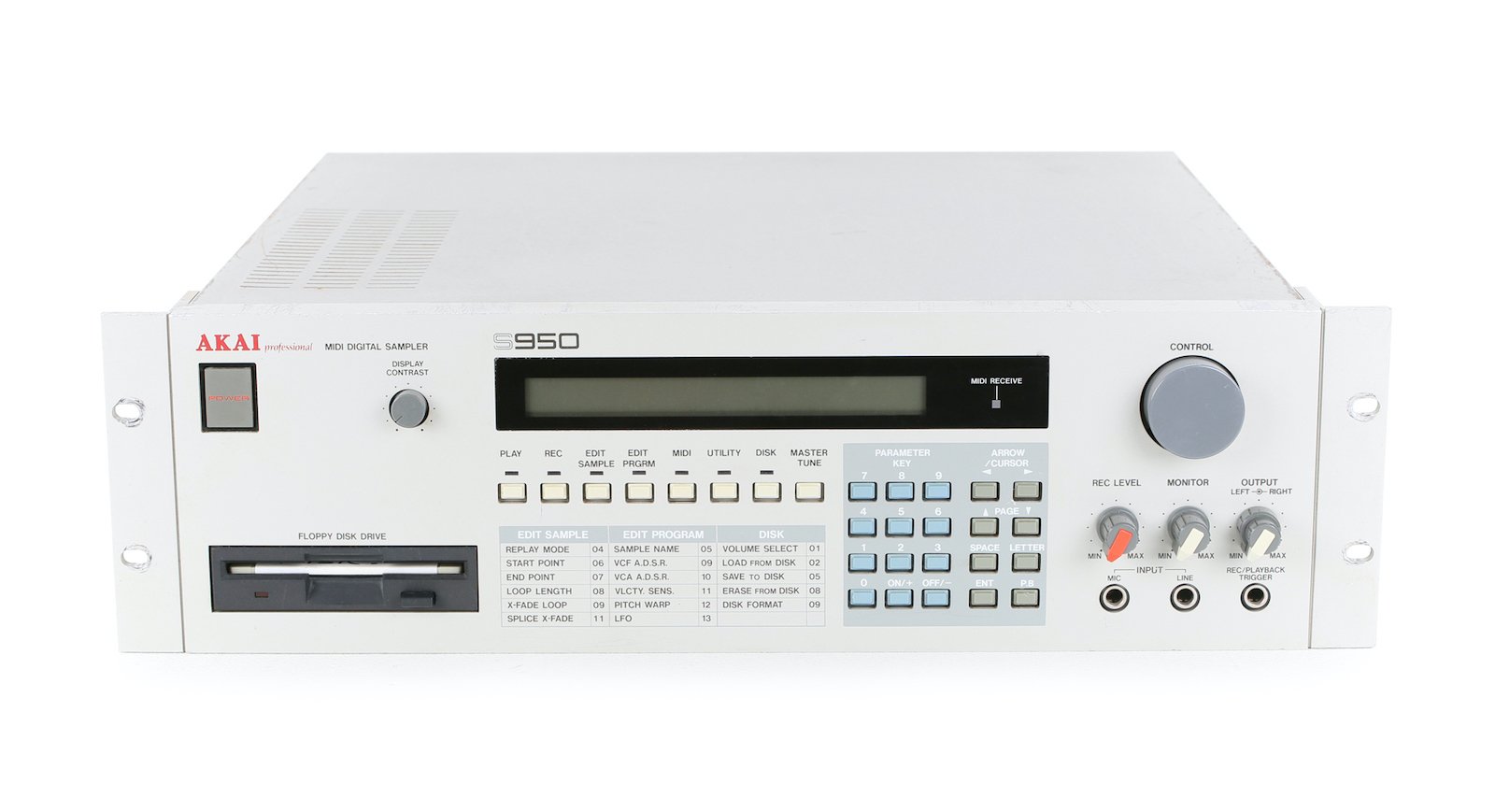
Released at the same time as the more advanced S1000, the S950 was intended as an incremental update to the S900. It retained an eight-note polyphony and maximum of 12-bit sampling, but increased the top sample rate to 48kHz (albeit with a reduction in the available sampling time to nine seconds at full quality), and increased the number of samples that could be stored to 99, up from 32.
While the S950 lacked the option for an additional 8 input trigger board, it could be upgraded with a SCSI connection, to allow use of larger storage mediums - which is particularly important for modern users. Notably, it was also the first sampler of its kind to introduce the time-stretching functionality that Akai became famous for.
S1000: Increased Fidelity, Polyphony, Storage—and True Stereo!
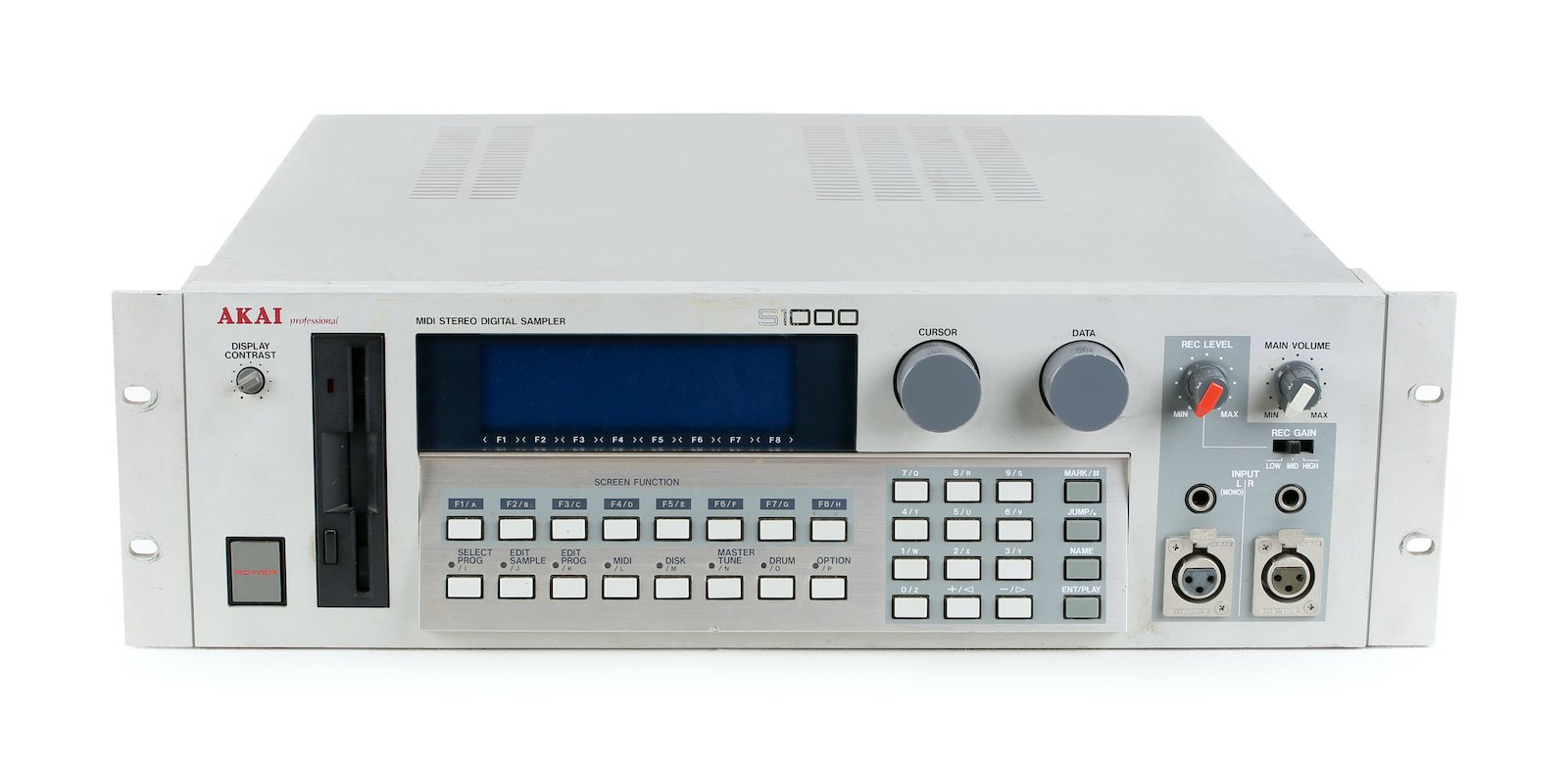
The S1000 marked a significant step forward from previous models in the S series, introducing the possibility of true stereo sampling for the first time, and also upgrading the sample rate to 16-bit. There was a dramatic increase in the samples that could be stored, up from 32 on the S900 to 200 on the S1000, and a doubling of the total note polyphony from eight to 16 simultaneous voices.
The internal 2MB memory was upgradeable to 8MB, and without adding additional RAM, the S1000 could record just under 12 seconds of samples in stereo at 44.1kHz - or around 47 seconds in mono at 22.05kHz. This was intended to be a high quality, professional sampler for its time, and along with the S950, it was one of the first to introduce Akai’s time-stretching technology.
S2800/S3000/S3200/S3000XL: Continued Steps Forward
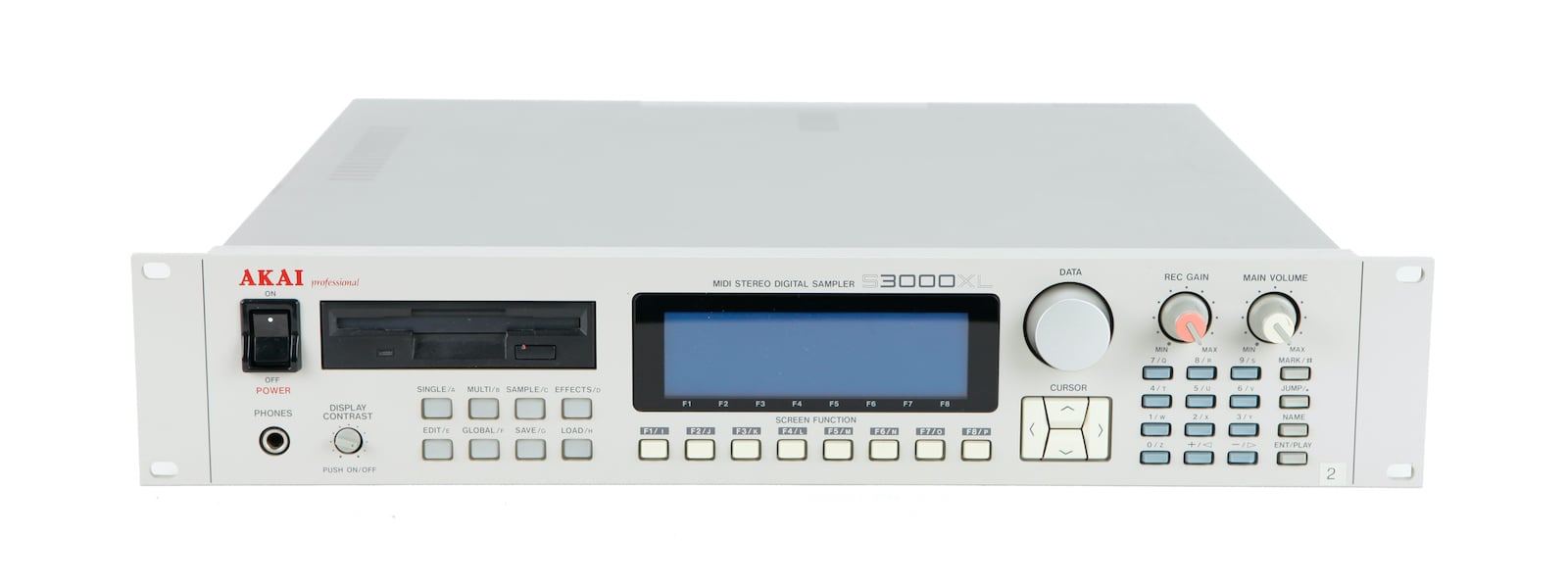
In the early '90s (c. '92–'93), Akai released a number of new samplers that had improved core features, including 32-voice polyphony, a maximum of 255 samples, the inclusion of various digital effects, and resonant filters.
Some of the specifics differed between models, including the maximum amount of RAM (16MB in the S2800, and 32MB in the S3000)—but all of them were known as capable samplers in their own right. There were a variety of expansion boards available, and both the S3200 and S3000XL came with additional upgrades as standard. The S3000XL is particularly notable for introducing "MULTI" mode, which allowed for multi-timbral layering and sequencing, as well as a new effects processor.
S2000: an Affordable Alternative
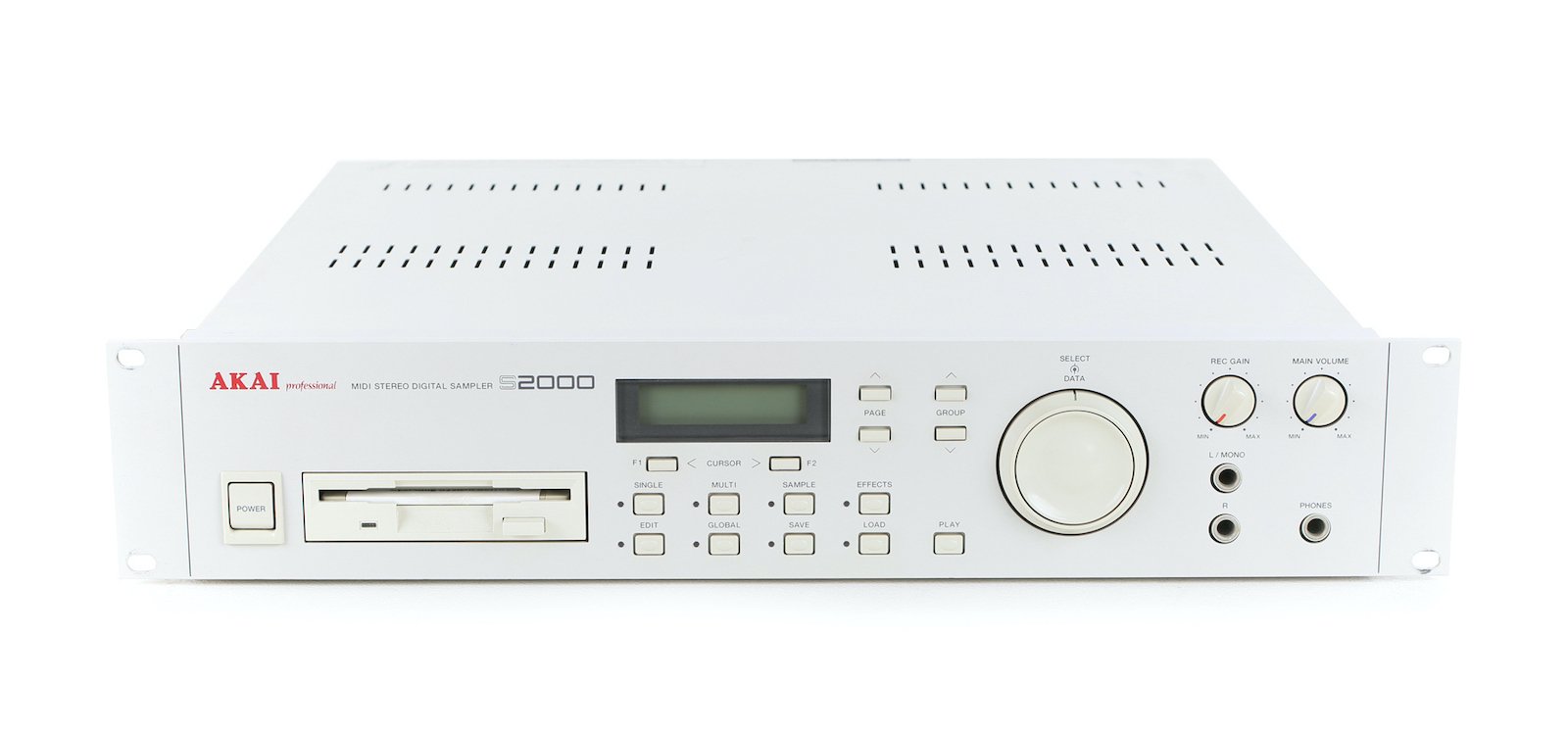
The S2000 was (rather bizarrely, given its name), released a number of years after the S2800/S3000, and intended as a cheaper alternative. It included many of the features from the more expensive models (such as 32-voice polyphony, expandable RAM, and digital effects), but did not include the assignable eight mono outputs as standard. All of this came with a significantly cut down front panel, which meant that editing samples was a much more time consuming affair.
S5000 + S6000: Sampling Flagships
The S5000 and S6000 were the last of the samplers to be released in the S series (though not the last ever rack mount samplers from Akai). These were powerful 16-bit samplers with large screens and computer-like interfaces that had been significantly redesigned from any of their predecessors, intended for professional use. With the S5000 and S6000, Akai adopted support for WAVs, as opposed to the proprietary file formats that had been used previously, greatly expanding the possibility for cross-platform compatibility.
At their heart, both of these samplers are effectively the same. However, the S6000 came with upgraded specs by default, including a maximum polyphony of 128 voices (versus 64 in the S5000 pre-expansion), and 16 analog outputs (versus 8 in the S5000). The S6000 also included a number of physical differences that could not be upgraded on the S5000 after the fact, including a removable screen to allow for easier editing, and an additional drive bay. There were also a raft of additional optional boards that could be installed, including a USB connection for direct transfer to Mac or PC.
The internal memory of both came in at 8MB, which was expandable up to 256MB. Without expansion, the maximum sampling time was 36 seconds in stereo at 48kHz, or 1 minute and 16 seconds in mono at 48kHz. These were serious sampling machines, though perhaps never reached the heights of commercial success that they could have, due to the rapid technological development of music production software for domestic computers.
Modern Usage: the Akai S Series in the 2020s
Despite the fact that the features and specifications of samplers in the S series have long since been surpassed by modern offerings—certain models in particular have remained popular, and the range in general has been experiencing something of a renaissance over the past few years.
It may well seem bizarre to some that anybody in 2023 would contemplate purchasing a bulky hardware sampler that relies on floppy disks—especially when you can pick up a brand new modern device such as the Akai Force for just over $1,000, complete with internal hard drive and warranty. However, there are a number of reasons that people still feel drawn to the vintage samplers of the S series, and will work around their various shortcomings to use them for making music.
Modern Usage: Features
You would be forgiven for thinking that modern samplers would surely be better than those from the S series in every way. However, the fact that these devices were released in an era dominated by hardware means that certain models contain features that are no longer common (even if they remain desirable!). For a start, rack mounted gear remains practical, even though the form factor has fallen somewhat out of favor—and there are no contemporaries in that regard, with manufacturers preferring desktop units.
For specific examples, the S6000’s screen can prove incredibly useful in cramped environments, allowing you to edit parameters far from the base unit, which may be located inconveniently in a rack. Similarly, the 16 assignable analog outputs far exceeds the number you will find on any device on the market today—and allows those with a collection of outboard gear to run individual elements of their composition through different kinds of post-processing.
Creative producers have also found new uses for samplers such as the S2000, which was infamously tedious to program due to its limited display and deep menu structure. By circuit bending the unit’s RAM chip, you can achieve an array of interesting glitched out sounds, which would not be possible on a more modern device.
Modern Usage: Sound
While some may scoff at the idea of vintage technology making any noticeable change to the sound of a final production, one of the main reasons that the S series samplers remain popular today is due to the particular character that individual models impart.

There is no doubt that the nature of the technology that was available throughout the progression of the S series meant that samples were not recorded with perfect clarity in the way that we would expect from today’s devices. Whether down to a combination of the bit depth, sample rate, or the specific analog to digital converters that were in use, samples would be infused with a particular "grit" or edge—which for many came to be inextricably linked with the music of the era. Similarly, the algorithms used in features such as time-stretching at the time were distinctive, even when compared to the options available currently.
As a result of these sonic idiosyncrasies, there are a number of samplers from the S series (such as the S900/S950) that remain highly sought after, and you can expect to pay a premium for them on the second hand market. Producers may choose to sample sounds directly into these units purely to obtain those particular sounds—even if they aren’t making use of any of the other features.
Modern Usage: Workflow + Aesthetics
People often focus on the end result when talking about the usefulness of particular tools for making music, and overlook the importance of the process itself. There are many people out there who are perfectly happy creating entirely on a DAW with all of the limitless possibilities, but there are also others who find that limitations provide inspiration, as well as pleasure. Even in contrast to modern hardware samplers, the simplicity of dedicated units such as those we’ve outlined above can help encourage folks to make music that they might never have otherwise.
Even where there are no obvious quantifiable benefits of a particular vintage sampler, sometimes the reason that these devices remain popular is simply because they are cool. The joy of ownership shouldn’t be underestimated when it comes to a creative practice—and for many people, the thought of firing up a noisy old grey box to make music is much more exciting a prospect than opening the lid of a laptop.
In Summary
There’s never been a better time to be interested in sampling. The range and variety of devices that can be had for affordable prices is staggering—and the features on things like the MPC Live II (battery power, SSD hard drive, etc) are the likes of which we could only dream about 15 years ago.
However, there are also plenty of reasons to explore the world of vintage rack mount samplers. While all of the S series samplers make use of storage methods that would be considered impractical by today’s standards, there are a number of alternatives available that dramatically increase their usability. Floppy disk drives can be replaced with virtual emulators, and those samplers equipped with SCSI connections can use SCSI2SD converters.

